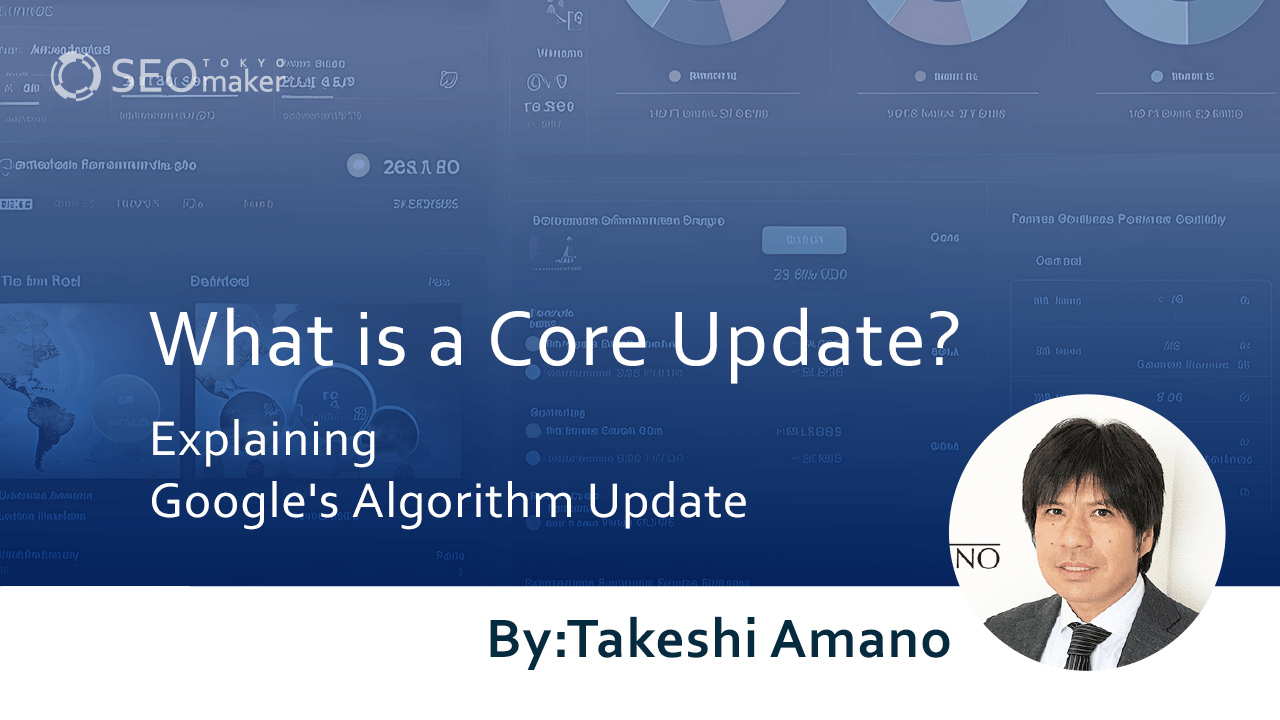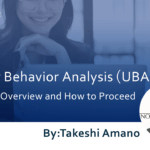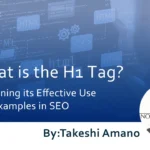What is a Core Update? Explaining Google’s Algorithm Update
contents
- 1 What is a Core Algorithm Update?
- 2 Major Updates Conducted in 2023
- 3 Summary
 A core algorithm update refers to the updates that Google regularly makes to its search ranking system. While Google updates its search engine almost daily, these core updates are significant changes that occur several times a year, causing substantial fluctuations in search rankings.
A core algorithm update refers to the updates that Google regularly makes to its search ranking system. While Google updates its search engine almost daily, these core updates are significant changes that occur several times a year, causing substantial fluctuations in search rankings.
These updates are officially announced by Google before they are implemented (typically 2-4 times a year).
For instance, the core update was implemented on November 2023 core update.
Incident began at 2023-11-02 12:09 and ended at 2023-11-28 08:30 (all times are US/Pacific).
| DATE | TIME | DESCRIPTION |
|---|---|---|
| 28 Nov 2023 | 08:32 PST | The rollout was complete as of November 28, 2023. |
| 2 Nov 2023 | 12:09 PDT | Released the November 2023 core update. The rollout may take up to 2 weeks to complete. |
Reference page: Google Search Status Dashboard
It’s advisable to strategize SEO efforts with these core updates in mind.
Although it’s impossible to avoid core algorithm updates, there are ways to minimize negative impacts and even enhance your site’s evaluation during these updates. This article will discuss strategies for managing a website robust against core algorithm updates.
What is a Core Algorithm Update?
A core algorithm update is a regular update by Google to its search ranking system, occurring 3-4 times a year. These updates significantly impact search results as they update the core algorithms that determine these results.
Significant drops or rises in search rankings can heavily impact businesses. Since around 2020, Google has started to inform the public about these updates in advance through its official Twitter account.
Impact of Core Algorithm Updates
The extent of each algorithm update varies. Some updates may significantly impact mobile search results, target sites engaged in spam activities, or apply only to sites with extremely slow loading speeds.
Typically, core algorithm updates result in noticeable changes in the top search results, with some sites dropping from the first to the second page or even further.
Daily Updates
Many are aware that Google updates its search engine almost daily. However, these daily updates usually don’t have a significant impact on rankings.
Rankings may fluctuate slightly every day due to factors like updates from competitors or new articles being added. But the impact of these daily updates is generally minimal and challenging to address.
Major Updates Occur Several Times a Year
Based on past trends, major updates occur 2-4 times a year. For example, there were three major updates in 2020 (January, May, December), three in 2019 (March, June, September), and three in 2018 (March, April, August).
Expect one update between January-March, another between April-June, and one between July-December, with the possibility of an additional update in between. If a site hasn’t experienced significant ranking changes for over six months, it likely hasn’t been affected by a major update.
Pre-Announcements of Core Updates on Google’s Official Twitter
Google announces core updates in advance on its official Twitter account.
For instance, before the May 2020 core update, Google tweeted: “Later today, we are releasing a broad core algorithm update, as we do several times per year. It is called the May 2020 Core Update. Our guidance about such updates remains as we’ve covered before. Please see this blog post for more about that.”
Later today, we are releasing a broad core algorithm update, as we do several times per year. It is called the May 2020 Core Update. Our guidance about such updates remains as we’ve covered before. Please see this blog post for more about that:https://t.co/e5ZQUAlt0G
— Google SearchLiaison (@searchliaison) May 4, 2020
Similarly, before the May 2022 core update, Google tweeted: “Today, we’re releasing a broad core update, as we do several times per year. This update is called the May 2022 core update.”
Content of Core Updates
Core updates always involve revising content. Key considerations include:
- Whether unique information or content is conveyed
- Comprehensive coverage of the topic
- Offering a different perspective or interesting information compared to others
- Providing added value and originality not found in other sources
- Ensuring titles and headings are helpful to readers and not overly exaggerated
- Making the site worthy of being recommended by others
- Establishing the site as a trustworthy source (e.g., citing information sources)
- Accuracy of site information
- Whether content is created by experts knowledgeable about the site’s theme
- Correct spelling and appropriate writing style
- High-quality pages without cutting corners
- Mobile compatibility
- Offering substantial value compared to other sites
- Providing genuine benefits to users
- Being evaluated from the EAT (Expertise, Authoritativeness, Trustworthiness) perspective
Search Ranking Changes Due to Core Updates
Core updates significantly alter how search engines evaluate websites, inevitably impacting search rankings. Many SEO professionals fear that core updates can drastically reduce the traffic of sites that had previously ranked high.

For example, one site experienced a significant drop in user traffic following the May 2020 core update but was not substantially affected afterward.
In contrast, another site did not experience notable impacts from the update, maintaining consistent traffic (although there were periods of reduced access due to other factors).

While search ranking changes can significantly affect traffic and, consequently, sales, not all sites are inevitably affected by updates.
[Side Note] Many wonder if a drop in rankings following a major update indicates poor content quality. While low-quality content will indeed rank lower, it’s more likely that the update has shifted the evaluation criteria. However, even if the content is not poor, rewriting it can improve rankings, so regular content updates are recommended.
How to Avoid Negative Effects from Core Updates
The methods to continue increasing access without being affected by core algorithm updates are actually found within the content communicated by Google. While these are all obvious points, some areas are difficult to improve. If your company is unable to handle these, please consult Tokyo SEO Maker.
Constantly Review Content
Content is always one of the most critical issues.
If your search ranking was high before a major update but fell due to the update, it means that the relevance between your content and search queries was judged to be low. Depending on the situation, if search needs change, outdated content will not rank high.
Especially articles like “Top Recommended Selections” need to be reviewed every time new tools or products are released, and some become obsolete over time.
When creating content, the first thing is to consider what users are looking for and provide information accordingly. At the same time, it is essential that the content is original. Content with no unique information can be substituted with content from other sites, making it difficult to rank high.
Also, content that merely summarizes the top-ranked content lacks originality and should prompt a reconsideration of the purpose of your site.
Strengthen E-A-T
Expertise, Authoritativeness, and Trustworthiness (E-A-T) have become very important SEO strategies since 2021.
How specialized the article is, who is disseminating the information, and whether it is trustworthy are all critical criteria for assessing the usefulness of content.
For example, articles about cancer written by a student researching cancer, a doctor, or a cancer specialist all have different meanings.
Google is believed to database who disseminates information and link it to the content’s context, weighting it accordingly. Therefore, you should carefully consider who is disseminating information on your site’s theme.
However, E-A-T itself is not a ranking factor but an indicator emphasized by Google. Improvements in E-A-T do not immediately lead to higher rankings. Generally, improving E-A-T takes time, so consulting with an experienced SEO company is recommended.
Improve UI/UX and Page Loading Speed
Google is a company that thoroughly implements a user-first approach. The more users it has, the more it impacts Google’s advertising revenue, so it must provide something that users are satisfied with and find easy to use.
In other words, providing what users truly want and find easy to use is Google’s challenge.
Google provides information through its search engine, but if it’s hard to read, understand, or use, users will stop referring to the site.
This involves the site’s loading speed, UI/UX, and mobile compatibility. The concept of Core Web Vitals has been used since around 2020, but the idea itself has existed before that.
Please make sure to modify your site to be user-friendly.
Review External Links and Citations
Google has explicitly acknowledged that external links affect search rankings. Generally, sites with many external links are highly rated.
However, it’s not just about collecting a number of external links; increasing natural links from highly-rated sites is important.
Some writing companies and SEO companies suggest creating high-quality content to increase natural links. While this is true, content from sites not ranking high is not visible to users, so even high-quality content rarely gets linked.
Therefore, you need to actively acquire external links. The same applies to citations.
If you are unsure how to acquire external links, consult Tokyo SEO Maker.
Efforts to Increase Branded Searches
Branded searches refer to searches using the site or service name. Generally, it’s easy to rank first in branded searches, so this is a must. Although ranking first in branded searches does not improve site evaluation, almost all top-ranking sites achieve branded searches.
This is because they increase brand awareness through SNS, link acquisition, various advertisements, etc.
Branded searches are less likely to be affected by major updates, and being able to achieve branded searches indicates high site evaluation, so please try it.
Prohibit Spam Practices
Obviously, spam practices are strictly prohibited. Google tends to penalize sites that repeatedly engage in spam activities, so at the very least, check the backend of your site once to ensure it does not violate Google’s guidelines.
Major Updates Conducted in 2023
To properly understand the changes, it’s better to view core algorithm updates from a mid-term perspective rather than judging based on a single update.
Let’s review the updates conducted up to November 2023. As you can see in the table below, Google has carried out core algorithm updates in March, August, October, and November of 2023. Particularly in the second half of the year, there have been significant updates, including the helpful content update.
| Dates | Updates |
| March 15, 2023 | Core Algorithm Update |
| August 22, 2023 | Core Algorithm Update |
| September 14, 2023 | Helpful Update |
| October 4, 2023 | Spam Update |
| October 5, 2023 | Core Algorithm Update |
| November 2, 2023 | Core Algorithm Update |
Reference page: Google Search Status Dashboard
Impact of the November Core Algorithm Update on Search Results
Here, we will discuss the general trends of how the core algorithm update in November 2023 has impacted search results. However, please note that there are many exceptions.
General Trends
Although there are many exceptions, the core algorithm update in November seems to have further intensified the trends from the update in October.
In other words, websites that improved their rankings in October tended to continue improving in November. Conversely, if a website’s ranking declined in October, it tended to fall further in November.
Websites that had been ranking high solely due to their content power are more likely to have dropped in ranking due to this update.
Parasitic Sites
Parasitic sites are websites that gain search engine recognition by borrowing subdomains or subdirectories from well-established sites with high trust and credibility.
If these websites align in theme with their host sites, they do not see much change. However, if the genres are significantly different, they tend to drop in ranking.
Domain Power
Domain power refers to the numerical representation of a domain’s trustworthiness in the eyes of search engines. It can be based on factors like domain age, which refers to how long the domain has been used for a website, and the quality and quantity of backlinks.
In the core algorithm updates of October and November, domains with strong domain power tended to be rated highly.
EEAT and Entities
EEAT stands for ‘Experience’, ‘Expertise’, ‘Authoritativeness’, and ‘Trust’. These are the four aspects that Google uses to evaluate websites. Websites with high EEAT ratings also tend to be rated highly in these updates.
Additionally, the more an entity aligns, the more advantageous it is for search result rankings. Entity alignment refers to matching attributes like titles, past events, addresses, gender, age, and areas of expertise.
This alignment helps search engines better understand companies and individuals.
Summary
Some people think core algorithm updates are terrifying acts that might cause their site’s ranking to drop. However, on the other hand, it can be seen as an opportunity to rise. However, being evaluated in an update means that what has been accumulated so far is being evaluated, so it cannot be addressed overnight. Continuous effort is required, but without knowing the direction of improvement, the strategy becomes inefficient. If you have been negatively affected by a core update or want to take precautions in advance, please consult Tokyo SEO Maker.










![What is a Description? Explaining the Meaning, Writing Style, and Changing Word Count – [2023 Edition]](https://www.switchitmaker2.com/en/wp-content/uploads/2024/09/what-is-description.webp)










